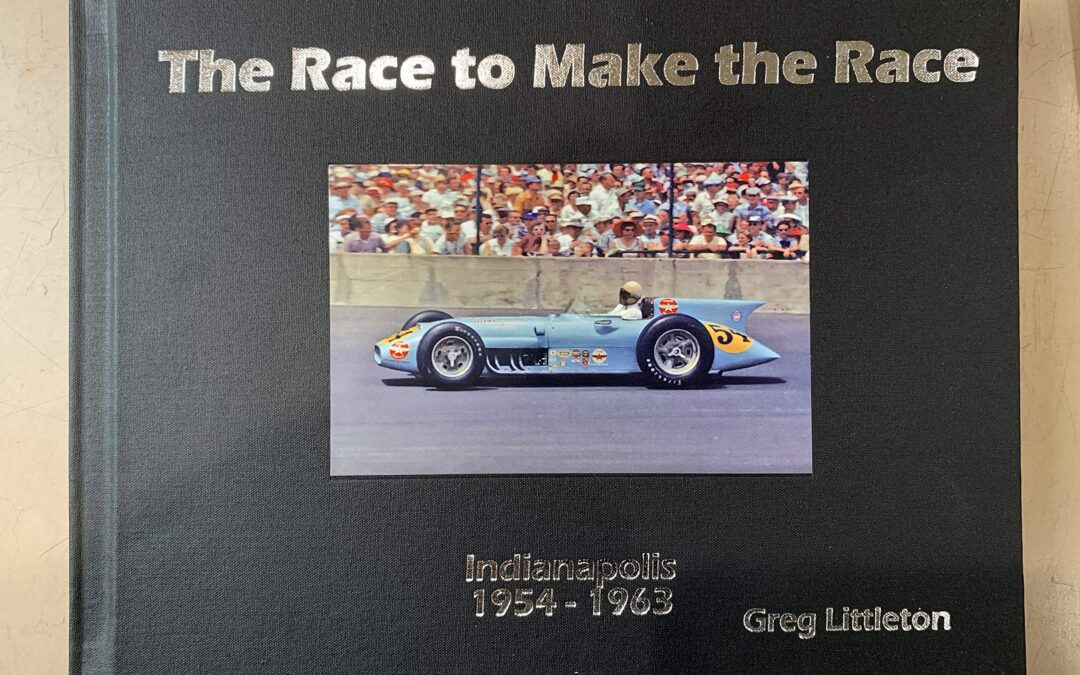
SIGNED
In his new book “The Race to Make the Race” Littleton chronicles a 10-year span (1954-1963) which was the peak roadster years at Indy and records what went on for every qualification attempt during this time period and each lap speed even if the attempt was yellow flagged. There is no mention of the races themselves as those results have been well-documented over the years.
Today’s 500 is lucky to attract 33 cars some years, but there was a time when the 500 really did have an actual Month of May and sometimes more cars went home than made the starting fields. Littleton’s book records by the actual time of day, weather conditions, attendance and all of the other happenings both on the track and in the Garage Area.
There are a lot of details in the book that you will never see anywhere else today. During the years in question the drama around the efforts to find speed just to qualify were often nearly as interesting as the actual race.
“While I was doing the Roadsters book I got the idea about doing a book on qualifications for the Indy 500,” said Littleton. “I got some qualifying information from the Speedway records when I was doing my first book. It was fun to do. I wanted to give the story on the successes and struggles each driver went through to try and make the Indianapolis 500 those years. The Bartholomew County Library was a big help in assisting me. They were able to get the microfilms from the Indiana State Library. I probably made 75 trips down to the local library to gather the information I needed.”
Littleton also mentioned two of the area’s standout racers at Indianapolis. Larry Crockett of Columbus who was the fastest rookie qualifier in 1954 and in the 500-mile race that year he ended up being the top finishing rookie over Pat O’Connor of North Vernon.
Littleton said Crockett, who died in a racing accident in Pennsylvania in 1955 right before he would have attempted to make his second Indianapolis 500, would have been a candidate to win the Indy 500.
“He was so young when he was starting out,” he said. “Nobody knows how his career would have turned out. If he had three or four years on him then I could have given you a better estimate on him. He was fast enough. There were some brave souls in 1954 and they said Larry Crockett was the best young driver in the United States.”
Like Crockett, Littleton gave his assessment on O’Connor who was killed in a first-lap accident in the 1958 race if he too could have won the Indy 500.
“Pat O’Connor definitely could have been an Indy 500 champion,” he said. “The legend of Pat O’Connor just keeps growing around here. You talk to guys and there is no doubt he was a natural. He was so smooth; everything came easy for him. He had the right head for it. He knew the days the car was good enough and the days it wasn’t.”
In documenting every lap of time trials during the 10-year span he chronicled there was one driver that stood out when writing the book was a young driver named Bob Scott in 1954.
“He had a good car in ’54 and on the fourth and final day of qualifying he was not in the show yet,” Littleton explains. “He jumped into a car that was not considered top-of-the-line equipment. He put three good laps together and they were going to be good enough to put him in the race, all he needed was one more consistent lap and he was in, but before he took the checkered flag he pulled into the pits and thus he didn’t qualify for the starting field. He apparently didn’t look at the flagman. He never did say why he pulled off.”
If Littleton had to pick a Mount Rushmore of Indy 500 champions his list would include: Bill Vukovich, A.J. Foyt, Wilbur Shaw and Al Unser Sr. Littleton also gave mention to 1963 winner Parnelli Jones.
“He was probably the least successful great race driver,” he said. “He would consistently beat Foyt in sprint cars, but he only won Indy once.”
On the sale last month of the Indianapolis Motor Speedway to Roger Penske, Littleton had this to say.
“Who else cares enough about racing and has the business acumen than Roger Penske?,” he asked. “He has everything that can make it work. Every decision he makes you may not like, but he has the best interest of the speedway in mind.”
Penske becomes the fourth owner of the track. The Hulman family had owned the track for 74 years.
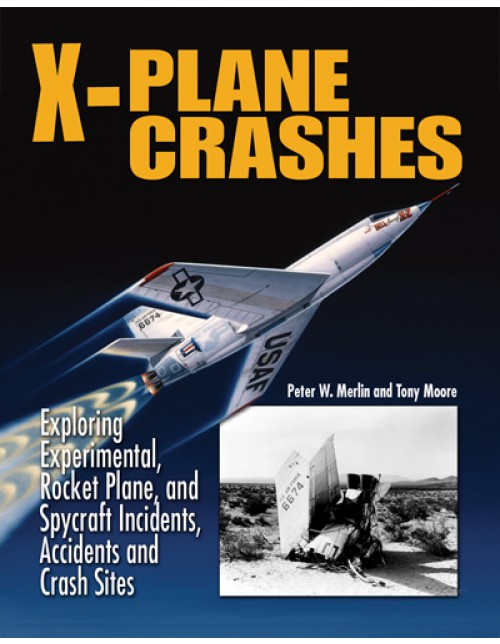
Known as “The X-Hunters,” authors Peter W. Merlin and Tony Moore have located more than 100 crash sites of exotic aircraft from Edwards air Force Base and Area 51. Together, they have recovered parts of supersonic rocket planes, stealthy spy craft, and vehicles that have reached the edge of space. Each story in the book profiles an unusual aircraft and the brave men who flew it. The authors examine the contributing causes of each crash and use then-and-now photographs to illustrate their findings. The stories end with The X-Hunters’ search for the crash site and what they discovered. Each adventure combines C.S.I.-type skills with X-Files persistence, with a dash of Indiana Jones for adventure. Aircraft profiled include the YB-49 and a pair of N9M flying wings, X-1A, X-1D, XB-51, XB-70, SR-71, YF-12, U-2 prototype, and many more.
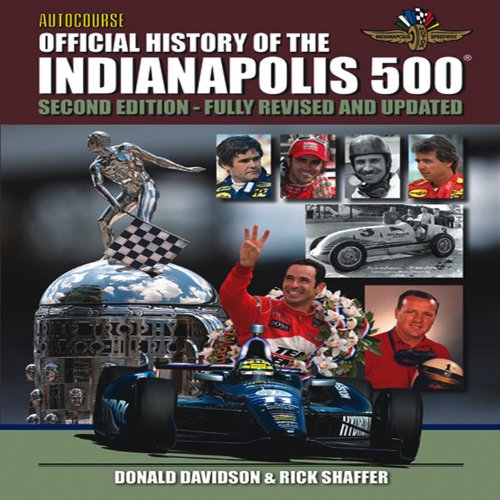
THE Indianapolis “500” is much more than merely the best known automobile race in the world. It is a cherished time-honored institution with a glorious history dating back more than one hundred years.
Known to most as, quite simply, “The 500,” it has been held every year since 1911, the only exceptions being 1917-18 and 1942-45, during the periods when America was involved in the two world wars.
Steeped in tradition, it has meant many things to many people and has played an enormous role in the lives of human beings, perhaps even more so for the spectators and devotees than for the participants themselves.
For over half a century, Memorial Day meant either trekking to the track or else ensuring that whatever other activity was planned for the day, a radio would always be within earshot. In more recent decades, settling down in front of the television has been added to the equation, while it is now the Sunday of Memorial Day weekend on which the extravaganza takes place, rather than on Memorial Day itself. But the feeling is the same.
For the participants, it has been a nearly 100-year saga of dreams, innovation, ingenuity, bravery, triumph, and tragedy. Paupers became millionaires, young men from small towns and broken homes became international celebrities, and regrettably, some of them gave their lives.
The “500” has endured world wars, depressions, recessions, political strife, and negative journalism, and yet it continues to draw massive passionate and emotional crowds, whose loyalty is rewarded with never-to-be-forgotten moments such as the finishes of 2006 and 2011, when Dan Wheldon snatched victory on literally the final turn.
This, then, is the story of the Indianapolis 500 and how it came to be. This is the story of more than 100 editions of the race, interspersed with a look at some of the compelling personalities, some little-known facts, an attempt to document the origins of some of the traditions, and perhaps even to dispel a few myths.
From Harroun to Franchitti, it’s all here…

On a bright October morning in 1904, thousands of people flocked to Nassau County on rural Long Island to witness the first international motor sports competition in America: the newly created Vanderbilt Cup. By 1906, the number of spectators multiplied to a quarter million and America s place in motor racing history was assured. In 1908, the Vanderbilt Cup was joined by a second international competition, the International Grand Prize, the first grand prix held outside France. By 1913, the Indianapolis 500 would supplant the Vanderbilt Cup and Grand Prize as America’s preeminent race, forever turning mainstream America’s attention away from road racing and toward the oval tracks then proliferating around the country. Concentrating on the years between 1904 and 1916 and featuring a wealth of photographs, this book examines the early and relatively unknown history of American motor racing. Beginning with an overview of motor racing history, it covers the French origins of the sport and the first international competitions such as the annual Gordon Bennett Cup and the ill-fated Paris to Madrid race. The primary focus is on America’s first three races of international stature: the Vanderbilt Cup, the International Grand Prize and the Indianapolis 500. Compiled in great part from contemporary sources such as newspaper accounts and automotive journals, the book covers not only these races, but also the ways in which each spurred development of the American automobile industry, making it at last a true competitor for that of Europe.
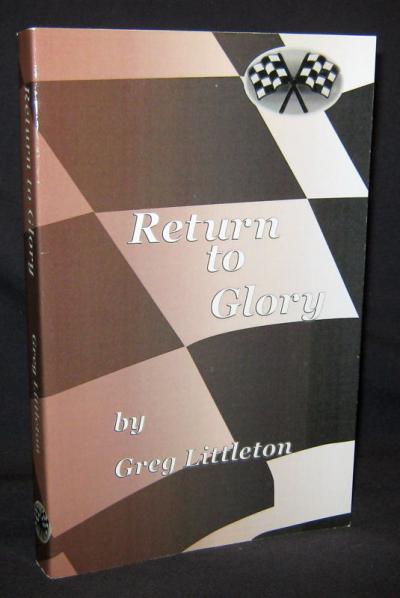
The Indianapolis 500 is dying. A hole was poked its soul nearly fifty years ago by unknowing people who thought that putting the engine behind the driver was progress. Since then life has slowly ebbed from the great spectacle where fearless men once dueled, sometimes to the death. Like American gladiators, they drove beautiful chairots before hundreds of thousands of adoring fans in the most amazing arena in the world, the Indianapolis Motor Speedway. It is early June 2010, the Indy 500, held the previous week, had once again been a very competitive race, attended by a crowd, that at one time would have been considered adequate for the firt day of Time Trials. The TV ratings have slipped and more importantly, the aura that once surrounded the great even has diminished. Last week’s race was run with cars tht no one remembers, driven by men and women that few can recall. Next year will be the 100th anniversary of this American icon. Tom Grey, the owner of the beautiful speedway makes a dramatic decision; “Gentlemen
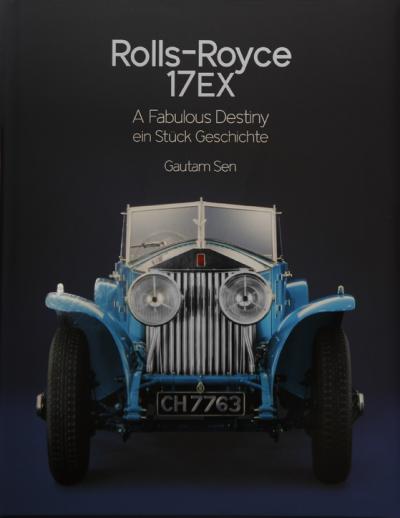
There are cars in the histories of all marques that are absolute milestones. In the case of Rolls-Royce, Silver Ghost AX201 and the experimental 1928 Phantom I torpedo 17EX were the first two of a string of chassis that all contributed to establishing the reputation of the marque.
In the late 1920s, luxury cars were competing for buyers both in the US and Europe. Winning races and rallies was a major factor in gaining customers.. Therefore, to keep up with the competition, Henry Royce felt it necessary to enhance the one model he had in production, the Phantom I, successor to the famed Silver Ghost. One hundred miles an hour was the goal, an almost mythical barrier for many cars! As a consequence, a lightweight streamlined style of body was tested on three experimental chassis (hence the EX tag in the chassis number). The design was created by Ivan Everndern and the cars received almost identical bodies, although by different coachbuilders, to facilitate ensure meaningful comparisons and tests.
This book is the story of one of these cars, 17EX, from conception to 2012. The book is lavishly illustrated with period photos in which we can see the car in India, where it was first sold to 33-year-old Rajah Hari Singh Bahadur after the tests. Its full history is known, which is quite rare. First in India from 1929 to 1976, then in various European countries, including Holland when it was owned by Spyker CEO Victor Muller until it passed to Austrian Alexander Schaufler in 2009. (17EX last traded hands in 2009 at an RM auction in London for €482,625.)
The car was fully restored to the last nut and bolt. Photos of the reframing and re-skinning attest to the thorough, no expense spared job which included a complete mechanical rebuild. This effort and passion earned the car a place in the Pebble Beach Concours d’Elegance in 2012.
This is a large format book full of top quality photographs
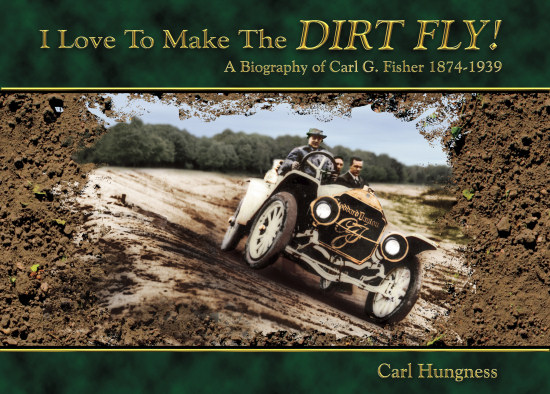
Carl Fisher was an indomitable huckster and salesman who started his working life pedaling magazines and bicycles before making his mark as the key moving force behind creating and building not only the Indianapolis Motor Speedway but also Miami Beach. He’s also considered the father of the Lincoln and Dixie Highways, America’s first interstate road systems, and the creator with IMS partner Jim Allison of Prest-O-Lite, manufacturer of the first mass market automobile headlight.
The title for Hungness’s book comes from Fisher’s love of carving something out of an empty field or wilderness. ‘I love to make the dirt fly!’ was one of Fisher’s favorite sayings which he would deliver with a wide grin at the site of one of his latest field or forest-clearing construction sites. He also loved high society, polo, parties and alcohol.
During this time Fisher started racing bicycles and after a visit in 1900 to a show for the burgeoning horseless carriage industry in New York’s Madison Square Garden he became a convert and soon was selling motorcycles and automobiles. His bicycle shop became ‘Fisher’s Garage’ and then ‘The Fisher Automobile Company’ as he emerged as one of Indianapolis’s most prosperous citizens.
In October of 1908 Fisher indulged in one of his most renowned publicity stunts when he flew a hot air balloon across the skies of Indianapolis while seated in a brand new Stoddard-Dayton automobile suspended beneath the balloon!
At the time the fledgling automobile industry was booming with more than 76 manufacturers setting up shop in the state of Indiana. Most of them lasted only a few years but the fever for automobiles resulted in Fisher building a giant, 2.5-mile test track on the outskirts of town in partnership with Arthur Newby and Jim Allison. The Indianapolis Motor Speedway opened in 1909, the first 500 was run two years later and the 100th running of the world’s oldest race takes place next year. Of course, Fisher went on to engage in many other entrepreneurial escapades, including founding and developing the Prest-O-Lite company with Allison and Miami Beach with Henry Flagler.
‘I love to make the dirt fly!’ will provide readers with a thorough appreciation of the spirit that made both the Indy 500 and America great.









